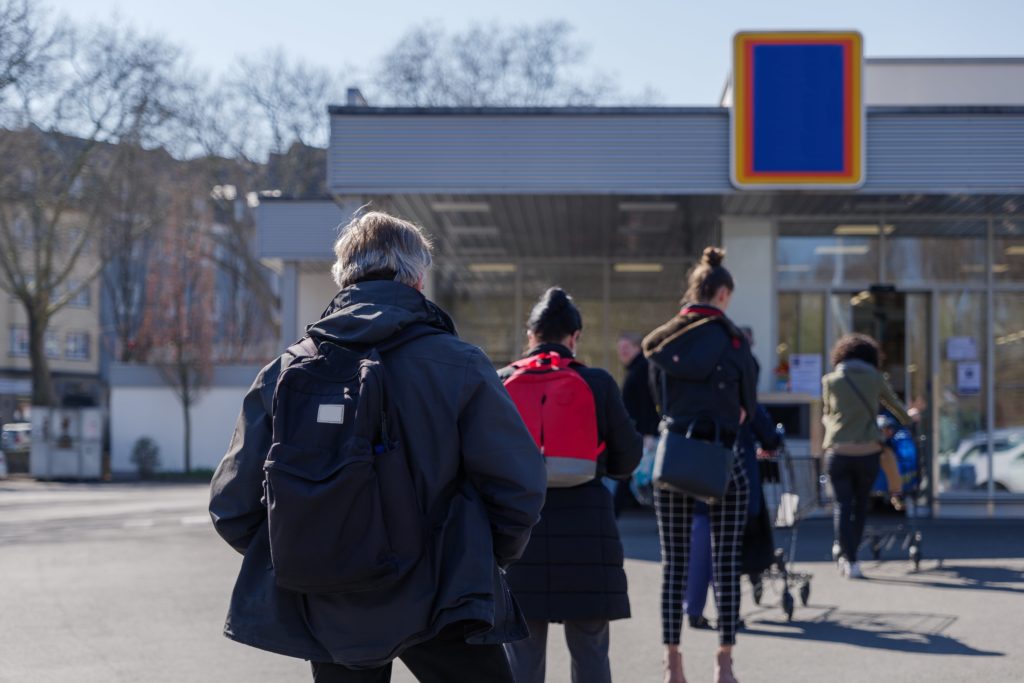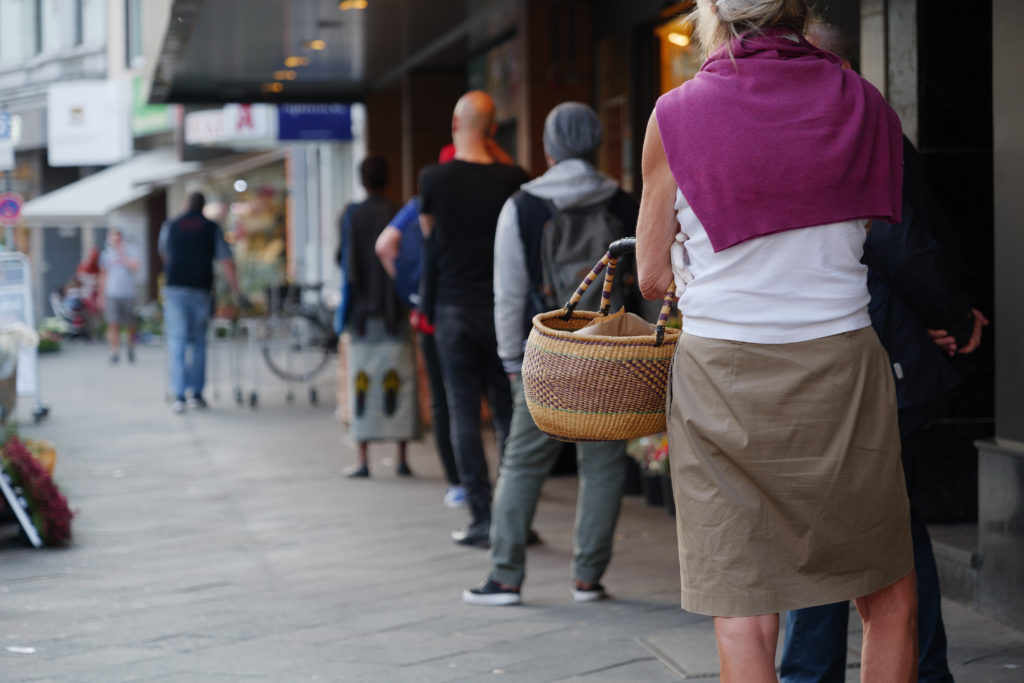
Summary
As the COVID-19 pandemic rapidly spread across the globe, companies and industries leapt into reactionary mode. For many, understandably, it became difficult to plan and focus beyond the barrage of day-to-day challenges that unfolded.
As the most dramatic portion of the crisis begins to subside and some countries in Asia, Australasia, and Europe gradually ease lockdown restrictions as they transition from peak crisis to recovery periods, manufacturers and retailers are starting to prepare for the next phase of the “shutdown economy”.
Advantage Perspective
There is still a long way to go before society and the economy at large returns to pre-crisis levels. Even once things normalize, it is extremely unlikely that consumer behaviour and industry dynamics will fully reset to where they stood before the pandemic took hold.
It becomes important, therefore, to assess which of the reactionary measures adopted as a result of the crisis may fade away, which might stick around for the medium-term, and which could evolve into long-lasting changes that define the grocery industry for decades to come. This week, we examine what the next phase of the “new normal” could look like for Category Demand, Branding and Marketing, and Industry Dynamics.
1. Category Demand
The last two months have seen unparalleled volatility in the demand for and spend on various categories. However, signs of a return to stability are slowly starting to show.
“Hygiene products”, such as hand soaps, vitamins and cleaning products – are seeing surges in demand levelling off from their peaks. Yet, sales are likely to sustain above pre-crisis levels as cleanliness and sanitization maintain increased importance as a category that consumers will prioritize spending towards.
As the crisis took hold, consumers rushed to stock up on staple products with longer shelf lives such as pasta, rice, canned and frozen foods. Across Europe and North America, most household pantries and freezers are now fully loaded, and it is predicted that sales for these categories are likely to return to pre-crisis volumes. At the same time, categories such as fresh, impulse, and confectionery that consumers refrained from purchasing as the crisis unfolded are starting to see demand normalize.
The categories likely to remain negatively impacted longer-term are high-end luxury products that rely on discretionary spending power and consumer confidence.
2. Branding and Marketing
At the start of the crisis, shoppers’ psyche was dominated by panic as they rushed to stockpile essential products that they feared would run out. They did not have the luxury of being brand or channel discriminate, purchasing whatever they could get their hands on as long as the price was within reason and void of price gouging. As store shelves fill up, and the new economic realities take hold, recessionary behaviour is starting to set-in, and consumers are turning to discount and private label brands when the choice is available.
The crisis brought about a rapid halt to brand and advertising campaigns focused on product features and positioning, with CPG companies shifting their messaging to focus on what they were doing corporately regarding safety protocols and community relief. Emphasis on social responsibility efforts is likely to continue, however, product messaging will not cease entirely, especially for brands looking to tout their health and cleanliness credentials.
For categories that saw demand fall during the peak of the crisis, such as confectionery, it is anticipated that some category leaders may opt to pivot from a product to a category-focused communication strategy.
Promotions, which also took a back seat during the peak of the crisis and in some instances were prohibited by regulators to prevent certain in-demand items from being hoarded, are likely to return for manufacturers of categories with an excess stock looking to encourage bulk purchases.
The crisis could mark the full decline of some advertising platforms. For example, some are predicting that paper flyers, long a staple of supermarket outreach, could switch over entirely to digital versions.
3. Industry Dynamics
Even once restaurants, hospitals, and schools open-up, the foodservice sector is likely to experience contraction as recessionary conditions remain. While this should serve as a boon for the core grocery industry, this does not make it immune from contraction and consolidation as well.
The grocery sector has long operated on high volumes and low margins. Non-discounters will be facing top-line margin pressures as consumers flock to discount and non-premium private label brands. While bottom-line cost pressures will be seen in the form of salary hikes brought about by “hero pay” and increased in-store cleaning measures.
Especially vulnerable will be offline retailers who have not invested in their own online delivery capabilities or partnered with an online delivery specialist. The crisis inspired many a consumer to order groceries online for the first time. Even if the online experience was far from seamless, with enhanced safety measures and physical contact apprehension persisting, it will likely be a long time until visiting a grocery store feels like a routine, anxiety-free experience.
Independent neighbourhood formats and regional grocery chains could also capture increased market share as the crisis has instilled in consumers a stronger sense of community and an affinity for supporting local businesses.
Transformation is also likely to occur within the stores themselves, with layouts changing to allow for more handwashing and sanitizing stations, as well as increased health and safety education and signage. Some grocery stores are debating whether to get rid of salad and self-service food stations entirely. Even if the virus disappears fully, new policies and configurations such as dedicated senior hours and one-way aisles could endure.
With the advent of digital grocery, larger store formats may want to exclusively assign some shelf and refrigeration space in-store towards online order fulfillment, as well as convert parking facility space to house “click and collect” bins.
Sources
- Q1 results: flat sales reflect unprecedented impact of Covid-19
- What Will Manufacturing’s New Normal Be After COVID-19?
- Tracking Spending on Food and Household Goods Amid COVID-19
- How consumer-goods companies can prepare for the next normal
- GETTING READY FOR STABILITY AFTER COVID-19
- Coronavirus (COVID-19): three ways Kroger is preparing for life after the pandemic
- Hy-Vee’s CEO on what he’s learned from the pandemic — and what lies ahead
- Changing Habits, Behaviors, and Attitudes: What will Stick?
- Q&A: Breaking Down the Online Delivery Boom
- How Will Grocery Store Design Change Post-Pandemic?
- New Normal: How COVID-19 could change Canada’s grocery landscape forever
- Metro adjusts to new normal under COVID-19
Supporting Article
How do Retailers Respond to Employee COVID-19 Diagnoses?

Summary
As North America peaks in the number of Coronavirus cases and testing is not readily available to all employees, retailers are having to manage through a public relations minefield when one of their employees shows symptoms of, or tests positive for the infection. Should they disclose this incident to the public and their employees? How should they let people know? And how should they respond to ensure health and safety? This is uncharted territory. With no federal requirement for public disclosure of this information and the implications of personal privacy leaks, retailers need to weigh the pros and cons and make their own decisions as they feel their way through this potentially disastrous situation.
Some retailers believe going public with an announcement is the ‘right thing’ to do providing customers and the public with transparency so they can make choices about where they shop. Others express it is a way of caring for their shoppers and their store communities and hope that it will build trust post-crisis. Many others are taking a less proactive approach but are stepping up internal protocols to limit associate and shopper exposure to the Virus. No matter the impetus, all parties are doing their best to keep their team members and shoppers safe and their reputations clean. Two of the ways in which retailers are making an impact during this challenging time are (1) messaging to shoppers and the community and (2) health and safety measures post-diagnosis.
Advantage Perspective
The decision to bring forward information about employees diagnosed with COVID-19 is with the retailers. Ultimately though, shoppers will vote with their wallets as we come through the crisis. This pandemic has brought out a spirit of humanity and consideration for people. We have seen many examples of companies supporting each other, the public and the frontline heroes, both essential and non-essential during the pandemic. As retailers consider how they want to be perceived as the world comes out of the pandemic, gestures made, and directions taken by some may be inspiration for others.
1. Messaging to Shoppers and the Community
- Trader Joe’s and Giant (US) released a statement to customers when one of their employees tested positive for Coronavirus in Washington DC.
- Food Basics (CAN) released a media statement in Ottawa, CA when an employee was confirmed positive.
- Sprouts and H-E-B’s (US) and Longo’s (CAN) websites detail a list of the stores and the dates when employees who tested positive were last in the store.
- ShopRite (US) details on Facebook pages how many associates have tested positive and how many are showing symptoms.
- Publix (US) will confirm positive cases upon request.
- Fresh Market (US) posted a sign at the entrance of one of their Florida stores for 24 hours and sent a statement to the local media.
- Loblaws (CAN) notified customers who recently shopped at a location to alert them of potential exposure.
2. Health and Safety Measures Post Diagnoses
- Trader Joe’s (US) closes their stores for deep cleaning. Sometimes they engage a third-party vendor and they also have a hygienist come in to sign-off on the cleaning. They post store closures, so shoppers know in advance and pay all crew members scheduled to work during the closure for their shifts and for some, two additional days of paid leave.
- Costco (CAN) is screening associates before their shifts. They have also installed barriers and hired security guards to enforce physical distancing at some locations.
- Whole Foods (US) is issuing masks and face shields to all employees.
- Sprouts and others (US) have added labour hours to allow for more frequent cleaning and sanitizing, especially in high-touch areas such as restrooms, carts and checkout lanes.
- Walmart (US) has committed to having all employees wear masks and will issue temperature checks for employees.
- Fresh Market (US) is among a growing number of stores that requires all customers and employees to wear masks inside all their stores.
Sources
- Coronavirus cases in DC shed light on retailer-shopper communication
- Seven employees at Costco store in Vaughn test positive for COVID-19
- Trader Joe’s tackles COVID-19 with transparency
- COVID karma: How retailers treated workers may impact shopping behavior post-pandemic
- Grocery store employee who contracted COVID-19 didn’t know they had been tested, family says
- How transparent should grocers be about employees infected with COVID-19?
- Grocery stores take varied steps in publicly reporting coronavirus cases, implementing safety measures
- Employee at Forest Hill Loblaws tests positive for COVID-19





